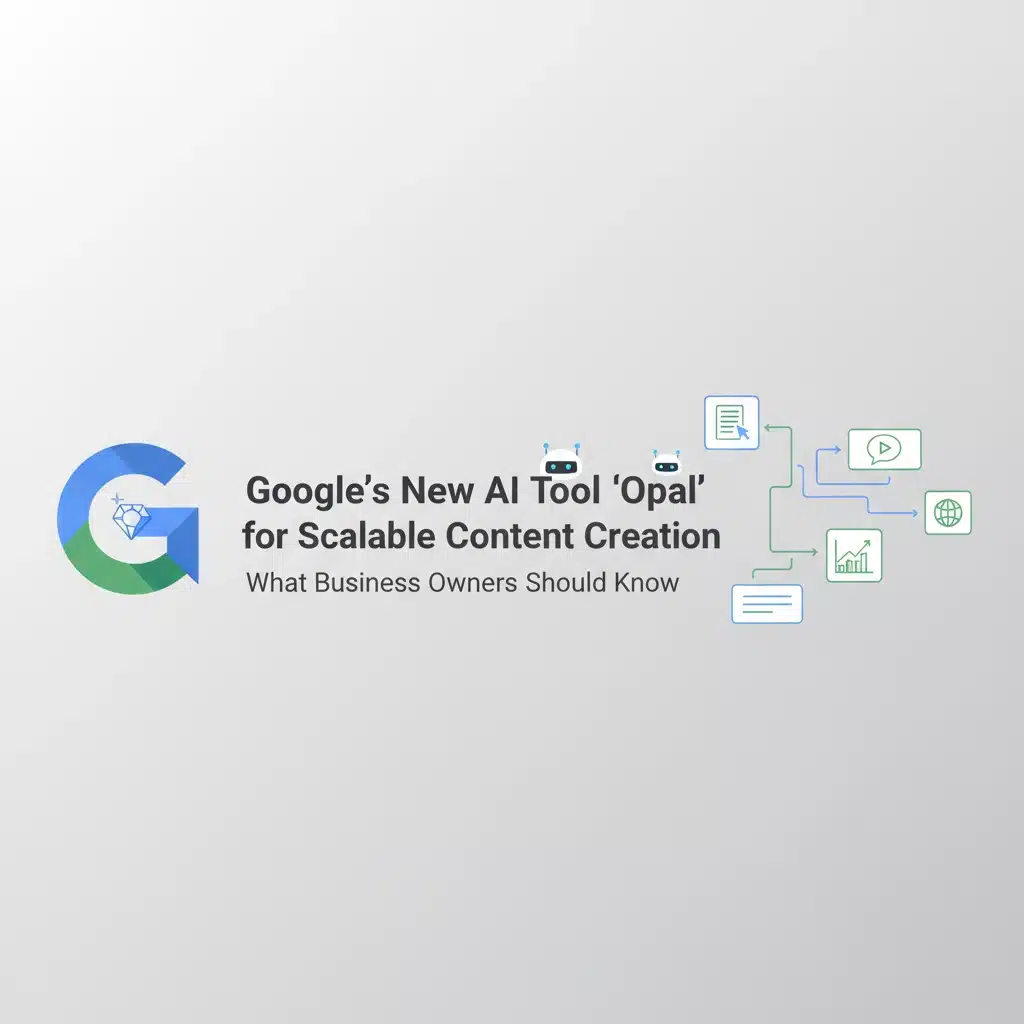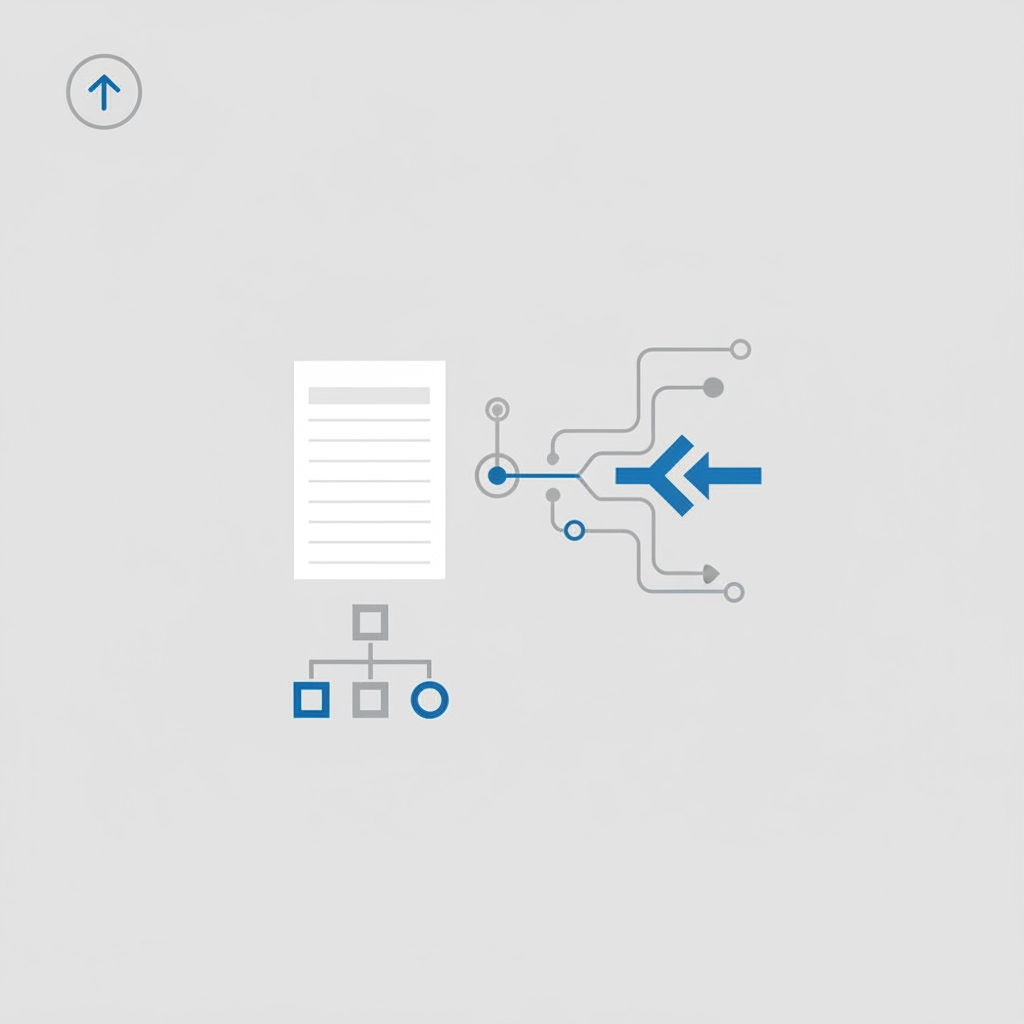Google has quietly launched one of its most ambitious AI tools yet: and it's creating waves across the digital marketing world. Opal, a no-code AI application builder, promises to help businesses "create optimized content in a scalable way." But here's where it gets interesting: Google's own marketing language for Opal appears to directly contradict their established guidelines on scaled content abuse.
For business owners navigating this new landscape, understanding both Opal's genuine capabilities and its potential pitfalls is essential. This isn't just another AI writing tool: it's a complete workflow automation platform that could revolutionize how you handle content creation, marketing tasks, and business processes.
What Is Google Opal?
Google Opal is a visual, no-code AI tool that allows users to build custom AI applications without writing a single line of code. Think of it as a drag-and-drop system for creating AI-powered workflows that can automate everything from content creation to data analysis. The platform combines Google's most advanced AI models, including Gemini for text generation and Imagen for visual content, into a single, accessible interface.
Since its launch as a Google Labs project, Opal has expanded rapidly to over 160 countries, signaling Google's serious commitment to democratizing AI automation for businesses of all sizes. Unlike traditional AI tools that serve a single purpose, Opal functions as a complete ecosystem for building custom solutions tailored to your specific business needs.
How Opal Actually Works
The magic of Opal lies in its simplicity. The platform uses a whiteboard-like interface with three types of interconnected nodes: User Input (where processes begin), Generate (where AI actions occur), and Output (where results are displayed). You don't need to understand programming logic: simply describe what you want in plain English, and Opal automatically generates the entire workflow structure.
Here's what makes it remarkable: a complex podcast outline generator that would traditionally require hours of manual research and curation was built in under two minutes by simply describing the desired workflow. The system automatically handles conditional logic, AI model selection, and data connections based on your description.
Users can refine their instructions on the fly, adjusting which AI models to use at each stage, how data flows between steps, and what outputs are generated. This flexibility means a single Opal app can evolve from a simple content generator into a sophisticated business automation tool.
Real-World Business Applications
Business owners are already leveraging Opal to solve genuine operational challenges across multiple domains:
Content Workflow Automation: Marketing teams have built specialized mini-apps that dramatically reduce manual work. A "Blog Post Factory" automatically creates complete blog outlines, expands them into full SEO-friendly articles, and generates optimized meta descriptions: all while maintaining brand voice consistency. A "Content Repurposer" takes existing blog posts and automatically generates multiple social media variations, tweet threads, and LinkedIn posts optimized for each platform.
Complex Task Automation: Companies are building apps that automatically extract web data for competitor research, analyze findings using AI, and save formatted results directly to Google Sheets. Weekly newsletter workflows, contract review processes, and customer research automation have become common use cases.
Rapid Prototyping and Testing: Entrepreneurs are using Opal to go from concept to minimum viable product in minutes. Custom applications like language learning tools, travel planners, quiz generators, and lead qualification systems can be built, tested, and refined without involving development teams.
Internal Process Optimization: HR departments are automating candidate screening workflows, sales teams are generating personalized outreach sequences, and customer service departments are building intelligent response systems that handle routine inquiries.
The Scaled Content Controversy: Google vs. Google
Here's where things get complicated: and why business owners need to pay attention. Google's promotional materials for Opal directly conflict with their own search quality guidelines, creating a confusing landscape for marketers and business owners.
Google's marketing explicitly highlights that creators have "adopted Opal to help them create custom content in a consistent, scalable way" and promotes "marketing asset generators" that "instantly generate optimized blog posts, social media captions and video ad scripts." This language sounds like exactly what many businesses want: automated, scalable content creation.
However, Google's scaled content abuse policy states unambiguously that "using generative AI tools or other similar tools to generate many pages without adding value for users may violate Google's spam policy on scaled content abuse." The policy specifically warns against creating large amounts of unoriginal content designed primarily to manipulate search rankings.
This isn't a minor contradiction: it's a fundamental tension that affects how businesses should approach Opal. Industry experts across Search Engine Land, SEO Roundtable, and other authoritative sources have flagged this inconsistency, noting that Google appears to be promoting behavior that their own algorithms are designed to penalize.
The Critical Distinction: Value vs. Volume
The key to understanding this controversy lies in intent and execution. There's a massive difference between using Opal to automate legitimate business workflows and using it to mass-produce thin content designed solely for search manipulation.
Legitimate Uses:
- Automating the repurposing of high-quality content across multiple platforms
- Streamlining research and data compilation processes
- Creating templates and frameworks that humans then customize and enhance
- Building internal tools that improve operational efficiency
Problematic Uses:
- Mass-generating blog posts with minimal human oversight or value addition
- Creating numerous pages of similar content targeting keyword variations
- Automating content publication without quality review or user value consideration
- Building systems designed primarily to game search algorithms rather than serve users
The distinction isn't always clear-cut, which is why businesses need expert guidance to navigate this landscape safely.
Practical Recommendations for Business Owners
Start with Process, Not Content: Use Opal primarily as a productivity and process automation tool rather than a content generation shortcut. Focus on workflows that genuinely save time while maintaining quality standards.
Maintain Human Oversight: Every piece of content generated through Opal should be reviewed, customized, and enhanced by human team members who understand your brand voice, audience needs, and quality standards.
Focus on Value Addition: Ask yourself: "Does this automated workflow help us create more value for our customers, or are we just trying to create more content?" If the answer leans toward volume over value, reconsider your approach.
Monitor Performance Closely: Track how content created with Opal assistance performs compared to traditionally created content. Watch for any drops in engagement, search visibility, or user satisfaction metrics.
Document Your Processes: Create clear guidelines for how your team uses Opal, what quality standards apply, and when human intervention is required. This documentation becomes crucial if you need to adjust strategies based on algorithm changes.
Stay Informed About Policy Updates: Google's guidelines around AI-generated content continue to evolve. Expert SEO Consulting stays current with these changes and can help you adapt your strategies accordingly.
The Strategic Approach: Using Opal Safely
For most businesses, Opal should function as a powerful assistant, not a replacement for strategic thinking and creative execution. The tool's genuine value lies in automating repetitive tasks, scaling personalization efforts, and accelerating the initial stages of content development.
Consider building Opal workflows that enhance rather than replace human creativity. A workflow that researches industry trends, compiles relevant data, and creates initial drafts for human writers to develop is fundamentally different from one that automatically publishes completed blog posts without review.
The businesses that will benefit most from Opal are those that view it as part of a comprehensive content and marketing strategy, not as a solution for cutting corners or avoiding the hard work of creating genuinely valuable content.
Moving Forward: Expert Guidance Matters
Google Opal represents a significant advancement in accessible AI automation, but it also introduces new risks and complexities that require careful navigation. The contradiction between Google's promotional language and their search quality guidelines isn't likely to be resolved soon, leaving businesses to make strategic decisions with incomplete information.
For business owners serious about leveraging AI tools like Opal while protecting their search visibility and brand reputation, professional guidance isn't optional: it's essential. The stakes are too high, and the landscape is changing too rapidly, to navigate alone.
At Expert SEO Consulting, we help businesses implement AI-powered workflows safely and strategically. We understand both the opportunities and the risks, and we can help you build systems that enhance your marketing effectiveness without jeopardizing your search visibility. Whether you're considering Opal integration or other AI marketing tools, we provide the expertise you need to move forward confidently.
Don't let the promise of AI-powered scale lead you into search penalty territory. Contact Expert SEO Consulting today for a strategic consultation that protects your digital marketing investments while maximizing the genuine benefits of AI automation.










